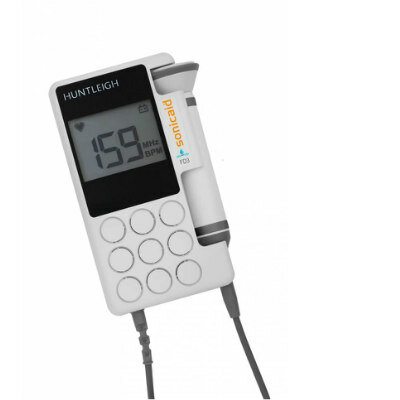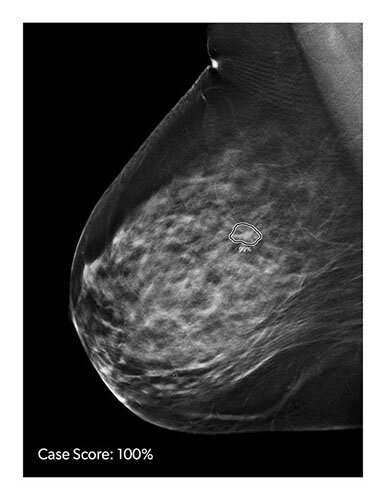Top 10 Predictions for Medical Imaging in 2022
|
By MedImaging International staff writers Posted on 04 Feb 2022 |

Some of the biggest advances will be seen in medical imaging workflow and artificial intelligence (AI) tools will benefit the technician as well as the radiologist, but will not be sold on the basis of their technology. These are among the top 10 predictions for medical imaging in 2022 published by Signify Research (Bedfordshire, UK), an independent supplier of market intelligence and consultancy to the global healthcare technology industry.
According to Signify, supply chain management will be crucial and disruptions in supply chain will impact all vendors in 2022. Amidst the scenario where manufacturing hurdles prevent vendors from translating their overflowing order books into revenue, supply chain management will be among the biggest differentiators of 2022. Signify also expects the democratization of medical imaging to be accelerated by larger vendors. So far, young upstart vendors have led medical imaging on its journey out of traditional imaging settings. However, in 2022, larger vendors will respond in force, accelerating the democratization of imaging.
Additionally, vendors and providers are expected to focus on advanced imaging systems. Recent innovations within advanced modalities such as CT and MRI, as well as the additional revenue opportunities created by them, indicate that vendors will be keen to focus on advanced modalities in 2022. Signify expects to see some of the biggest advances in medical imaging workflow. However, increasing dependence on MRI and CT means greater time and resource commitment from providers. Nevertheless, the latest workflow tools from vendors will help mitigate these disadvantages – something that assumes significant importantce in the wake of the disruptive pandemic.
Signify further expects technicians as well as radiologists to benefit from AI. So far, the use of AI in medical imaging has focused on reading images. However, this is set to change in 2022 with vendors launching new solutions that will aid in capturing images and also alleviate the widespread problem of staff shortages. Vendors are expected to intensify their focus on structured data aggregation in 2022 as both vendors and providers are beginning to increasingly understand the potential offered by data. The demand for real world evidence required to support drug development and companion diagnostics will create commercial opportunities to leverage this.
Further, Signify expects pathology to play a more significant role in medical imaging IT in 2022. As enterprise imaging solutions mature, digital pathology is all set to play a greater role. For most imaging IT vendors, primary use applications will only be tenable via partnerships, which are likely to gain greater traction this year. Signify anticipates AI product categories to blur in 2022. Typically, AI solutions fall in any one of the three categories: comprehensive solutions; end-to-end solutions; and body-area suites and workflow packages. However, the boundaries between these solutions are expected to blur in 2022 as imaging IT vendors and providers assume a more central role in the market.
In 2022, AI tools will not be sold on the basis of their technology. As providers become increasingly knowledgeable about AI, vendors will no longer be able to promote solutions based on their machine learning credentials and will instead need to prove how their solutions can resolve a provider's specific problems. Signify further expects the value of operational workflow to grow and increasingly shape business models in 2022. Operational workflow tools are anticipated to become of paramount importance to providers who are striving to operate most efficiently. In 2022, vendors will use these tools to sell additional professional services to providers, resulting in much closer relationships between vendors and providers over the longer term.
Related Links:
Signify Research
Latest Industry News News
- Bayer and Google Partner on New AI Product for Radiologists
- Samsung and Bracco Enter Into New Diagnostic Ultrasound Technology Agreement
- IBA Acquires Radcal to Expand Medical Imaging Quality Assurance Offering
- International Societies Suggest Key Considerations for AI Radiology Tools
- Samsung's X-Ray Devices to Be Powered by Lunit AI Solutions for Advanced Chest Screening
- Canon Medical and Olympus Collaborate on Endoscopic Ultrasound Systems
- GE HealthCare Acquires AI Imaging Analysis Company MIM Software
- First Ever International Criteria Lays Foundation for Improved Diagnostic Imaging of Brain Tumors
- RSNA Unveils 10 Most Cited Radiology Studies of 2023
- RSNA 2023 Technical Exhibits to Offer Innovations in AI, 3D Printing and More
- AI Medical Imaging Products to Increase Five-Fold by 2035, Finds Study
- RSNA 2023 Technical Exhibits to Highlight Latest Medical Imaging Innovations
- AI-Powered Technologies to Aid Interpretation of X-Ray and MRI Images for Improved Disease Diagnosis
- Hologic and Bayer Partner to Improve Mammography Imaging
- Global Fixed and Mobile C-Arms Market Driven by Increasing Surgical Procedures
- Global Contrast Enhanced Ultrasound Market Driven by Demand for Early Detection of Chronic Diseases
Channels
Radiography
view channel
Novel Breast Imaging System Proves As Effective As Mammography
Breast cancer remains the most frequently diagnosed cancer among women. It is projected that one in eight women will be diagnosed with breast cancer during her lifetime, and one in 42 women who turn 50... Read more
AI Assistance Improves Breast-Cancer Screening by Reducing False Positives
Radiologists typically detect one case of cancer for every 200 mammograms reviewed. However, these evaluations often result in false positives, leading to unnecessary patient recalls for additional testing,... Read moreMRI
view channel
PET/MRI Improves Diagnostic Accuracy for Prostate Cancer Patients
The Prostate Imaging Reporting and Data System (PI-RADS) is a five-point scale to assess potential prostate cancer in MR images. PI-RADS category 3 which offers an unclear suggestion of clinically significant... Read more
Next Generation MR-Guided Focused Ultrasound Ushers In Future of Incisionless Neurosurgery
Essential tremor, often called familial, idiopathic, or benign tremor, leads to uncontrollable shaking that significantly affects a person’s life. When traditional medications do not alleviate symptoms,... Read more
Two-Part MRI Scan Detects Prostate Cancer More Quickly without Compromising Diagnostic Quality
Prostate cancer ranks as the most prevalent cancer among men. Over the last decade, the introduction of MRI scans has significantly transformed the diagnosis process, marking the most substantial advancement... Read moreUltrasound
view channel
Deep Learning Advances Super-Resolution Ultrasound Imaging
Ultrasound localization microscopy (ULM) is an advanced imaging technique that offers high-resolution visualization of microvascular structures. It employs microbubbles, FDA-approved contrast agents, injected... Read more
Novel Ultrasound-Launched Targeted Nanoparticle Eliminates Biofilm and Bacterial Infection
Biofilms, formed by bacteria aggregating into dense communities for protection against harsh environmental conditions, are a significant contributor to various infectious diseases. Biofilms frequently... Read moreNuclear Medicine
view channel
New SPECT/CT Technique Could Change Imaging Practices and Increase Patient Access
The development of lead-212 (212Pb)-PSMA–based targeted alpha therapy (TAT) is garnering significant interest in treating patients with metastatic castration-resistant prostate cancer. The imaging of 212Pb,... Read moreNew Radiotheranostic System Detects and Treats Ovarian Cancer Noninvasively
Ovarian cancer is the most lethal gynecological cancer, with less than a 30% five-year survival rate for those diagnosed in late stages. Despite surgery and platinum-based chemotherapy being the standard... Read more
AI System Automatically and Reliably Detects Cardiac Amyloidosis Using Scintigraphy Imaging
Cardiac amyloidosis, a condition characterized by the buildup of abnormal protein deposits (amyloids) in the heart muscle, severely affects heart function and can lead to heart failure or death without... Read moreGeneral/Advanced Imaging
view channel
New AI Method Captures Uncertainty in Medical Images
In the field of biomedicine, segmentation is the process of annotating pixels from an important structure in medical images, such as organs or cells. Artificial Intelligence (AI) models are utilized to... Read more.jpg)
CT Coronary Angiography Reduces Need for Invasive Tests to Diagnose Coronary Artery Disease
Coronary artery disease (CAD), one of the leading causes of death worldwide, involves the narrowing of coronary arteries due to atherosclerosis, resulting in insufficient blood flow to the heart muscle.... Read more
Novel Blood Test Could Reduce Need for PET Imaging of Patients with Alzheimer’s
Alzheimer's disease (AD), a condition marked by cognitive decline and the presence of beta-amyloid (Aβ) plaques and neurofibrillary tangles in the brain, poses diagnostic challenges. Amyloid positron emission... Read more.jpg)
CT-Based Deep Learning Algorithm Accurately Differentiates Benign From Malignant Vertebral Fractures
The rise in the aging population is expected to result in a corresponding increase in the prevalence of vertebral fractures which can cause back pain or neurologic compromise, leading to impaired function... Read moreImaging IT
view channel
New Google Cloud Medical Imaging Suite Makes Imaging Healthcare Data More Accessible
Medical imaging is a critical tool used to diagnose patients, and there are billions of medical images scanned globally each year. Imaging data accounts for about 90% of all healthcare data1 and, until... Read more



















